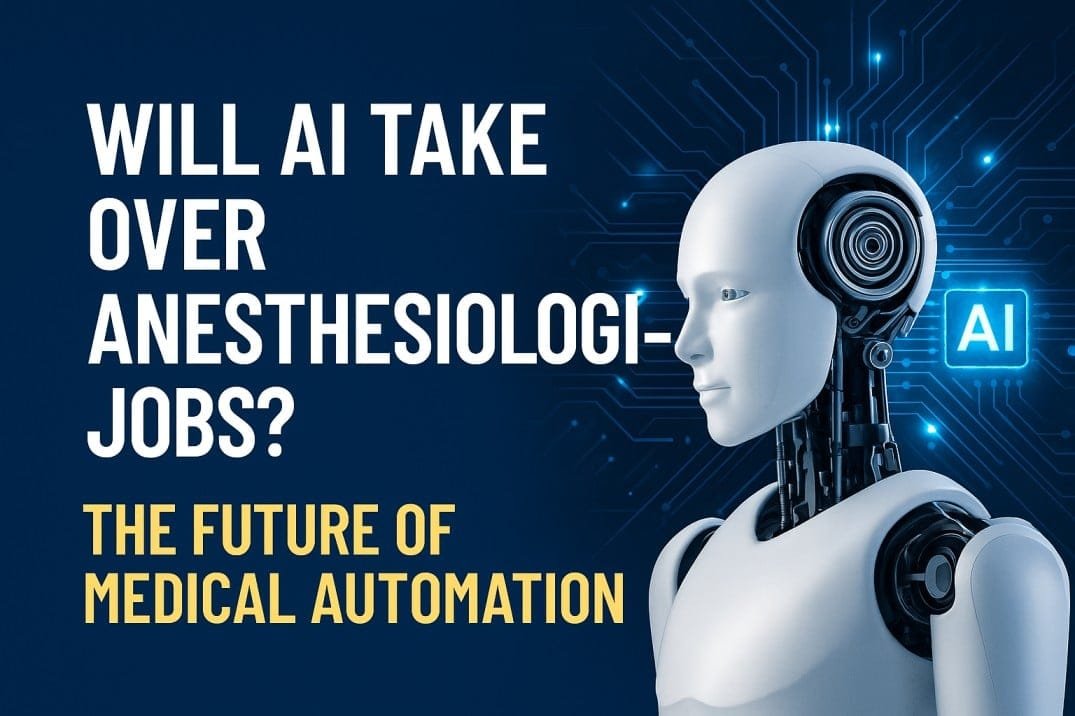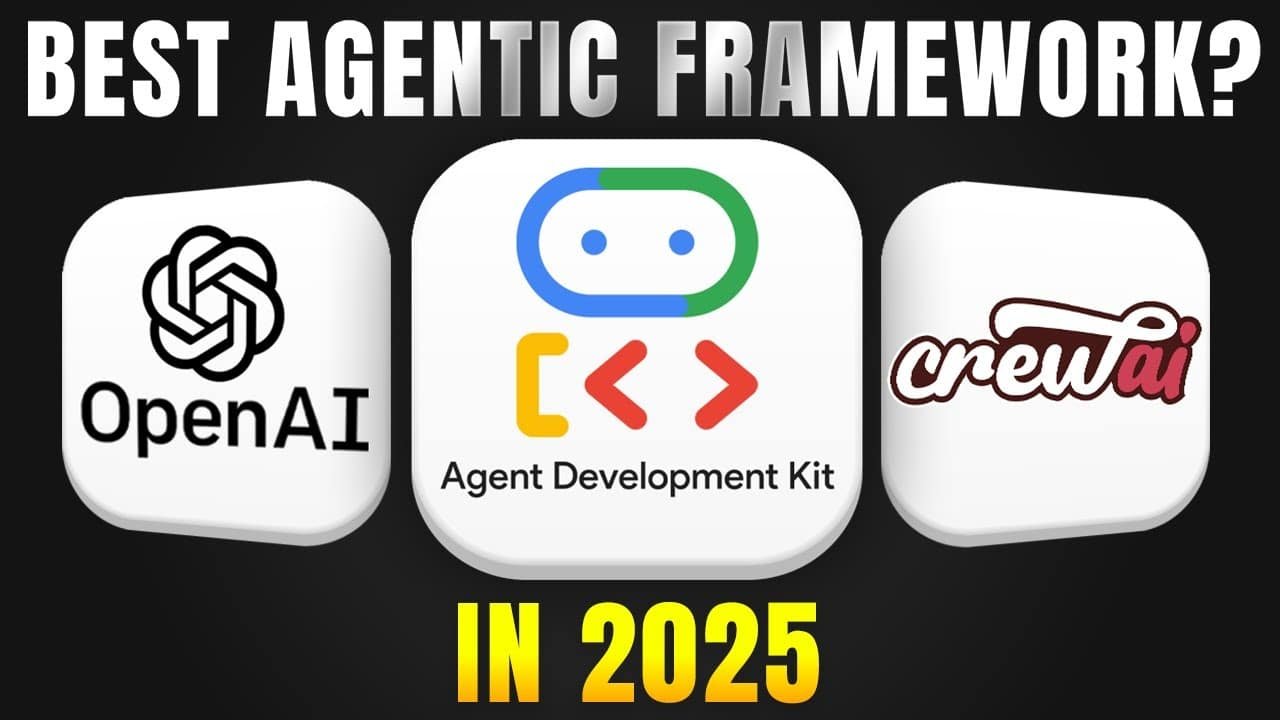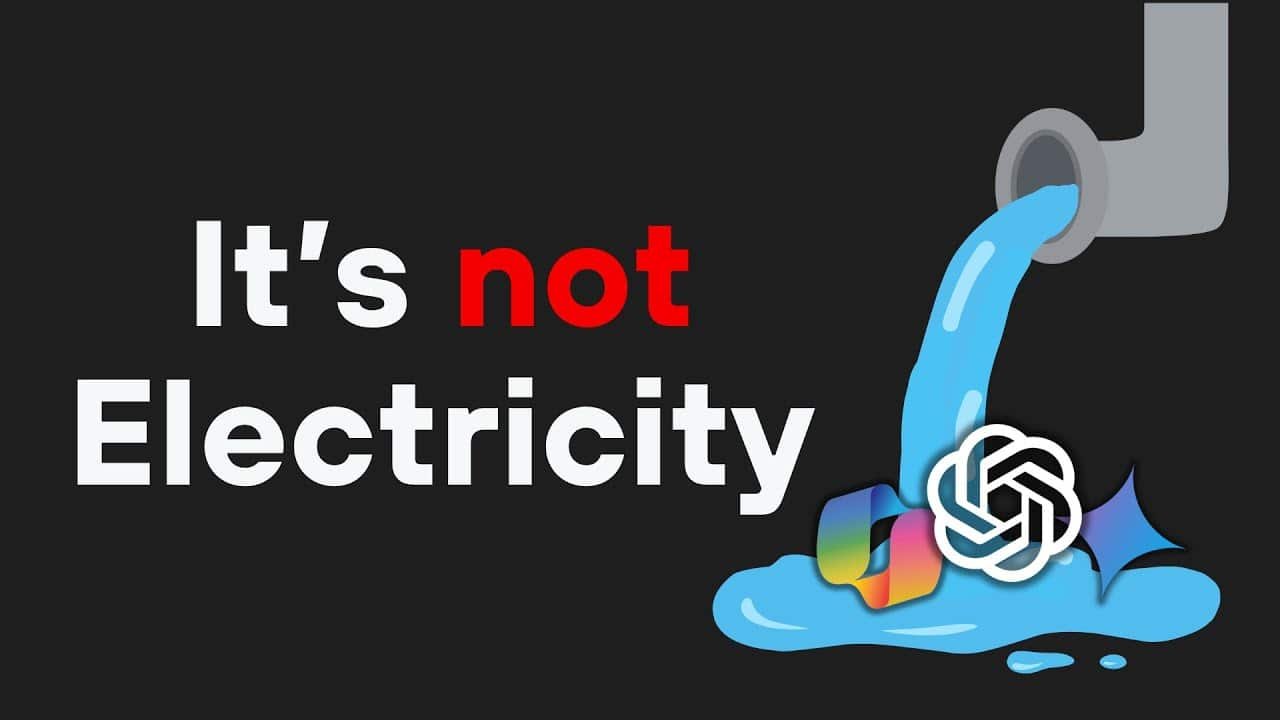The Future of Medical Automation
Will AI Take Over Anesthesiologists Jobs ? Introduction
Technology is changing the face of modern medicine, and nowhere is that more evident than in operating rooms. With smarter systems, predictive algorithms, and automation tools becoming part of everyday practice, anesthesiology is undergoing a quiet but profound transformation. This shift has sparked an important question in hospitals and classrooms alike: Will AI replace anesthesiologists?
Key Takeaway:
Although intelligent systems are increasingly supporting tasks like patient monitoring, drug dosing, and surgical workflow, they’re not here to replace anesthesiologists—but to work alongside them. The future points to a powerful partnership between skilled professionals and smart technology, where each plays a vital role in ensuring patient safety and surgical success.
Medical Automation in Anesthesiology: State of the Art
Automation in healthcare isn’t a distant vision—it’s already happening, and anesthesiology is one of the specialties seeing the most impact. From robotic IV drug delivery systems to intelligent data platforms, today’s operating rooms are getting smarter, faster, and more responsive.
Based on my experience and growing industry trends, AI’s role in anesthesia can be broken down into four major domains. But beyond the techy buzzwords, let’s explore how these tools are actually being used in real hospital settings:
1. Decision Support & Risk Prediction
AI doesn’t just crunch numbers—it actively helps anesthesiologists make more informed decisions. At a busy tertiary care center I observed, predictive analytics were being used preoperatively to assess a patient’s risk of complications like hypotension or delayed emergence from anesthesia.
Tools like the Hypotension Prediction Index (HPI) can analyze arterial waveforms and give clinicians advance warning—sometimes up to 15 minutes—before a blood pressure crash. This allows proactive management rather than reactive scrambling.
Think of it as a digital co-pilot who’s constantly scanning the skies for turbulence.
2. Automated Anesthesia Delivery
Closed-loop systems are one of the most impressive applications of automation in the OR. These are smart setups where the system continuously monitors the patient’s vital signs—like blood pressure, oxygen saturation, and EEG-based depth of anesthesia—and adjusts drug delivery accordingly.
I once saw a case where a Propofol infusion pump—connected to a BIS (Bispectral Index) monitor—automatically titrated the sedative to maintain an optimal depth of anesthesia. The anesthesiologist, of course, was supervising the entire process, but didn’t have to micromanage every dose. This freed them up to focus on higher-order concerns and unexpected events.
It’s like having cruise control for the brain.
3. Image Recognition & Procedural Assistance
Ultrasound-guided regional anesthesia is becoming the gold standard, and AI is starting to offer a serious helping hand. Some systems now include real-time image analysis that identifies nerves and vascular structures for the anesthesiologist on screen—reducing the learning curve for trainees and minimizing guesswork.
There are even robotic arms being tested that can perform intubations or assist with needle placement, guided by machine vision. While these tools aren’t widespread just yet, pilot programs in academic centers have shown promising results—especially in complex or emergency cases where human hands are under pressure.
4. Data Capture & Workflow Optimization
Documentation is no one’s favorite task, but it’s critical. That’s where AI-enhanced Anesthesia Information Management Systems (AIMS) come in. These systems automatically log vitals, drug dosages, and procedural steps, ensuring nothing is missed and reducing after-the-fact charting errors.
In one OR suite I observed, the AIMS platform even flagged documentation gaps in real-time and alerted the clinician before they signed off the case. It’s a quiet guardian that ensures both clinical and administrative excellence.
So, What’s Fueling All This?
The modern OR generates an avalanche of data every minute—ECG traces, ventilator settings, drug infusions, lab values—and it’s humanly impossible to catch everything at once. That’s where AI shines. It doesn’t get tired, distracted, or miss subtle patterns.
But let’s be real: the anesthesiologist is still at the center. Machines may assist, but they don’t replace clinical judgment, gut feeling, or compassionate care.
Historical Perspective: From Early Automation to Machine Learning
Automation in anesthesiology is not an overnight phenomenon. As early as the 1990s, “expert systems” were developed to deliver propofol using pharmacokinetic models (the famous Diprifusor™), and closed-loop anesthetic delivery systems appeared with fuzzy logic controllers in the early 2000s.[1]
AI-powered tools have since evolved drastically. Instead of responding to pre-set heuristics, modern machine learning models train on immense clinical datasets, finding subtle associations and continuously “learning” with every patient encounter. Deep learning approaches, using neural networks for real-time EEG-based anesthesia monitoring or to automatically adjust drug infusions, are pushing boundaries once thought impossible.

Case Studies: How AI is Transforming Real-World Anesthesia
Case Study 1: AI-Assisted Propofol Infusion
Context: At Massachusetts General Hospital (MGH), a collaboration with MIT produced a machine-learning algorithm trained to optimize propofol dosing using real surgical patient data.[2]
Findings: When tested against experienced anesthesiologists, the AI system matched or exceeded human performance in keeping patients safely unconscious while minimizing drug exposure. Unlike human providers, the algorithm adjusted dosing every 5 seconds (human average: every 20–30 minutes) according to subtle shifts in EEG and hemodynamic data.
Takeaway: AI’s strength lies in routine vigilance and continuous adjustment—perfect for automation as a “second pair of eyes.” However, the system was not used for anesthesia induction and still relied on human oversight to start and stop the process.
Case Study 2: Anesthesia Method Decision Support—AI vs. Anesthesiologist
Context: In a 2025 BMC Anesthesiology study, researchers compared the anesthesia method choices made by professional anesthesiologists with those generated by three leading AI chatbots (Gemini, ChatGPT, and CoPilot) for 72 real orthopedic patients.[3]
Findings: When given patient data, Gemini’s AI recommendations matched anesthesiologist decisions in about 70% of lower limb cases and closely tracked preferences in patients with complex medication regimens. However, for rare or guideline-sensitive clinical situations (e.g., a patient on anticoagulants), the AI’s suggestions sometimes diverged from best practice or expert consensus. Human judgment and guideline interpretation still played a critical role.
Takeaway: AI can help standardize routine decisions and provide quick references for established protocols. For complex or unique situations, clinician experience and situational awareness remain essential.
Case Study 3: Robotic Intubation and Regional Block Assistance
Context: Robotics and AI-powered nerve recognition software are already being tested to perform tracheal intubations and assist with ultrasound-guided nerve blocks.
Example: The Kepler Intubation System uses joystick-guided robotic arms for intubation, while Magellan (a robotic arm) has demonstrated precision in nerve block placement under ultrasound, albeit mostly in simulation or controlled scenarios.[4]
Takeaway: Robots now routinely perform high-precision procedural tasks in the lab and select surgical suites. Yet, in emergencies or when unexpected anatomical variants occur, the anesthesiologist’s physical dexterity and rapid situational problem-solving are irreplaceable.
Case Study 4: Predictive Analytics for Perioperative Risk
Context: Advanced AI models, such as the “MySurgeryRisk” platform, have demonstrated abilities to aggregate demographic, physiologic, and surgical data to estimate the risk of post-operative complications—including severe outcomes like mortality or the need for ICU admission.[5]
Takeaway: These predictive models support anesthesiologists in planning for highest-risk cases, facilitating shared decision-making with patients and surgeons. But no algorithm can capture every social, psychological, or emerging medical nuance.
A Day in the Life: What Can—and Can’t—Be Automated?
Anesthesiology is often viewed as one of the most technical specialties in medicine—but that doesn’t mean it’s ripe for full automation. Let’s walk through a typical day in the OR and explore what AI could take over…and where human expertise is irreplaceable.
1. Preoperative Evaluation & Planning
This phase is full of nuance. Reviewing a patient’s history, interpreting borderline lab results, and discussing options with anxious families requires more than data analysis.
✅ What AI Can Do:
Flag abnormal labs and drug interactions
Generate risk scores for complications
Recommend anesthesia plans based on similar past cases
🚫 What Only Humans Can Do:
Interpret unclear or conflicting data
Have meaningful, empathetic conversations with patients
Tailor plans based on social context and patient preferences
🩺 Real Talk: You can’t teach a machine bedside manner. A patient about to go under wants reassurance from a calm, confident human—not a risk algorithm.
2. Induction & Maintenance of Anesthesia
During routine procedures, closed-loop AI systems shine. They titrate Propofol, adjust sevoflurane, and keep vitals steady—all based on real-time feedback.
✅ What AI Can Do:
Maintain stable anesthesia levels during uncomplicated phases
Auto-adjust ventilation settings
Monitor vital signs continuously and detect early trends
🚫 What Only Humans Can Do:
Respond to unpredictable events (e.g., sudden bleeding, anaphylaxis)
Navigate communication breakdowns or surgeon requests
Improvise when standard protocols don’t apply
🩺 Real Talk: Machines are great at stable, repeatable tasks—but anesthesiology often thrives in the grey areas, where quick thinking saves lives.
3. Procedures: Intubation, Regional Blocks, IV Access
While AI-assisted vision systems and robotics are emerging, most procedures still require the finesse and adaptability of experienced hands.
✅ What AI Can Do:
Assist with ultrasound nerve identification
Stabilize needle placement using robotic arms
Help with positioning during intubation
🚫 What Only Humans Can Do:
Handle anatomical variations
Stay calm under pressure in failed airway scenarios
Use tactile feedback and visual-spatial reasoning in complex blocks
🩺 Real Talk: A robot might thread a catheter—but it won’t calmly reassure a patient who’s panicking on the table.
4. Emergencies
When things go sideways, humans lead. AI may detect issues early, but responding to them is a different beast.
✅ What AI Can Do:
Alert clinicians to hemodynamic instability
Recommend ACLS protocols or dose adjustments
🚫 What Only Humans Can Do:
Make split-second decisions
Lead the OR team with authority
Balance competing risks under pressure
🩺 Real Talk: In an emergency, patients don’t need a flowchart—they need a leader.
5. Documentation & Billing
This is one area where AI excels, and thankfully so.
✅ What AI Can Do:
Auto-log vitals and drugs into the AIMS
Suggest CPT codes
Flag documentation gaps or billing inconsistencies
🚫 What Only Humans Can Do:
Clarify ambiguous cases or override incorrect automation suggestions
Ensure records reflect clinical nuance
🩺 Real Talk: Automating routine charting frees up time for patient care—but final sign-off still needs a sharp human eye.
Limitations of AI in Anesthesiology: Where the Machine Stops
Even the most advanced AI has its boundaries—and understanding those is key to safe integration.
1. Contextual Judgment
AI struggles when real-world situations deviate from clean, labeled data. Anesthesiology often means adapting plans minute by minute based on changing surgical conditions.
2. Data Quality & Bias
Most AI models are trained on large datasets—but those datasets may underrepresent rare diseases, older adults, or minority populations. This creates blind spots in care.
3. Lack of Human Connection
Empathy, trust, presence—these can’t be programmed. A good anesthesiologist isn’t just a technician, but a calming force in a high-stress environment.
4. Ethics & Liability
What happens if a machine makes the wrong call? Who is liable? Patients still consent to human care—there’s no clear ethical framework (yet) for AI-led anesthesia.
5. Regulation & Certification
There’s no global standard or regulatory body that certifies an “AI anesthesiologist.” Deployment, testing, and safety validation remain in flux.
Bottom Line
AI is an incredible co-pilot—but anesthesiology still needs a captain. Machines can support, suggest, and streamline—but they don’t replace the intuition, humanity, and responsibility that anesthesiologists bring to every case.
Who Is Most at Risk from Automation in Anesthesiology?
While it’s unlikely that anesthesiologists will be completely replaced by AI in the near future, the nature of the job is definitely evolving. And with that evolution comes important questions: Which parts of the role are most vulnerable to automation—and how should the next generation of clinicians prepare?
Let’s break it down.
1. Mid-Level, Repetitive Tasks Are First in Line
Tasks that are highly structured, repeatable, and data-driven are prime targets for automation.
✅ Examples include:
Routine intraoperative monitoring
Auto-titration of anesthetic agents during straightforward cases
Standardized documentation and checklist compliance
These workflows are already being streamlined by AI-assisted systems and smart monitors. While this improves efficiency, it also means that some technical duties may no longer need constant human oversight.
2. Remote Supervision: The Rise of the “Tele-Anesthesiologist”
With improvements in telemedicine and robotic surgery platforms, the idea of remote anesthetic supervision is gaining traction.
Imagine this:
🔹 A single anesthesiologist supervising multiple ORs across locations
🔹 Each OR is equipped with AI-powered monitoring and robotic assistants
🔹 The anesthesiologist steps in only when necessary
This model could reduce the number of on-site professionals needed per case—increasing reach, but also intensifying workloads and legal responsibilities for those in the virtual cockpit.
3. Democratization or Deskilling? It Could Go Either Way
AI has the potential to “level up” less experienced providers, helping them manage complex decisions through real-time recommendations and alerts.
But there’s a flipside:
🧠 Over-reliance on automation can weaken foundational skills.
If trainees always defer to algorithms, they may not develop the clinical judgment, procedural finesse, or crisis management instincts that experienced anesthesiologists possess.
🗨️ As one attending once told me during residency: “You can’t troubleshoot what you don’t understand.”
4. Tomorrow’s Anesthesiologists Need a New Skill Set
To thrive alongside smart systems, future providers will need more than just clinical know-how. We’re entering an era where digital fluency, ethical reasoning, and human-centered design awareness are just as important as airway skills.
🎓 Training programs must evolve to teach:
AI literacy and data interpretation
Systems thinking and tech-augmented decision-making
Emotional intelligence and communication in high-tech environments
Ethical frameworks around automation and patient safety
Bottom Line
The anesthesiologists of tomorrow won’t be replaced—they’ll be redefined. The role is shifting from hands-on technician to team leader, systems thinker, and ethical guardian in an increasingly digital operating room.
Automation may take over the tasks, but not the responsibility. That still belongs to a human being with a steady hand and a sharp mind.
Looking Ahead: What Does the Future Hold for Anesthesiology in the Age of AI?
The idea of robots taking over the operating room can spark anxiety—but the future of anesthesiology isn’t about replacing humans. Instead, it’s about collaboration.
Leading experts and practicing clinicians envision a future where anesthesiologists don’t compete with machines—they work alongside them. Together, they’ll deliver safer, smarter, and more personalized care than ever before.
Here’s what’s on the horizon:
🔍 AI-Enhanced Vigilance in the OR
Imagine having a digital co-pilot that never blinks.
Advanced AI systems will continuously monitor hundreds of physiological signals—not just the standard vital signs. They’ll detect early warning signs of deterioration long before they become obvious, allowing anesthesiologists to act fast and stay ahead of the curve.
Think of it as augmented situational awareness, not a replacement.
🧬 Truly Personalized Anesthesia
AI won’t just follow protocols—it will personalize care.
Future systems will pull from genomic data, electronic health records, medication history, and even social factors to tailor anesthetic plans for each patient. That means:
Fewer adverse drug reactions
Faster recoveries
Better outcomes for high-risk populations
This is precision medicine meeting perioperative care.
🧠 An Education Revolution: Smarter Training with AI
Crisis scenarios are rare—but when they happen, you need to be ready.
AI-powered simulators will let trainees practice rare emergencies in immersive, high-fidelity environments, offering feedback that’s more nuanced than human instructors can always provide.
Expect anesthesiology education to lean heavily into virtual reality, predictive learning algorithms, and AI-driven debriefing.
🌍 Expanding Global Access to Safe Anesthesia
Millions around the world still lack access to safe surgical care. AI could change that.
With smart systems and remote supervision, clinically safe anesthesia delivery could reach underserved regions—even when on-site experts are unavailable.
In this model, an anesthesiologist in London or Mumbai could oversee procedures happening in rural clinics across the globe—bridging gaps in healthcare access like never before.
🤝 The Future Role: Less Technician, More Leader
In tomorrow’s OR, the anesthesiologist won’t just be “pushing drugs.” Their role will evolve toward:
Handling complex, high-risk cases
Overseeing systems and safety protocols
Leading multidisciplinary teams
Guiding ethical decisions about tech in medicine
What won’t change?
🫱🏼🫲🏽 The need for human presence, wisdom, and empathy—qualities no algorithm can replicate.
📌 Final Takeaway:
Anesthesiology isn’t disappearing—it’s transforming.
As automation grows, so does the value of uniquely human skills: critical thinking, emotional intelligence, ethical judgment, and calm leadership in chaos.
The smartest systems will support you—not replace you.
Conclusion: Should Anesthesiologists Fear AI?
Artificial intelligence is no longer a futuristic concept—it’s already shaping the operating room. But does that mean anesthesiologists should worry about being replaced?
The short answer: No.
AI and automation are reshaping anesthesiology, not replacing it. They’re handling the repetitive, data-heavy tasks, giving clinicians more time to focus on what truly matters:
Navigating complex, high-risk cases
Leading during emergencies and rapid changes
Educating and advocating for patients
Providing empathy, ethics, and human judgment
Yes, machines can titrate drugs and flag vital sign changes faster than any human. But can they offer comfort to a nervous patient, or make split-second decisions in a chaotic situation no algorithm has ever seen? Not yet—and perhaps never.
🔑 Key Takeaway:
AI won’t replace anesthesiologists. But anesthesiologists who leverage AI will lead the next era of medicine.
The future belongs to clinicians who blend medical expertise with digital fluency, who welcome innovation without losing sight of the human connection.
For more details on how AI is affecting various jobs and industries, check out What Jobs Are Most at Risk from AI?.
Moving Forward: What You Can Do Today
Whether you’re a doctor, policymaker, patient, or tech developer, you have a role to play in shaping a safe, ethical, and inclusive AI-powered healthcare system.
👩⚕️ For Healthcare Professionals:
Upskill in digital health, AI basics, and human factors engineering
Embrace continuous learning—not just in medicine, but in how technology is changing care
🧑⚖️ For Policymakers:
Collaborate with clinicians to build clear, ethical guidelines
Ensure oversight structures that prioritize transparency, safety, and patient rights
🧑🤝🧑 For Patients and Families:
Don’t be afraid to ask: “How is technology used in my care?”
Share your preferences, values, and concerns—you’re part of the team
🧑💻 For Technologists:
Work closely with frontline clinicians
Focus on designing tools that enhance, not replace, the uniquely human parts of medicine
Final Thought:
The operating room of the future won’t be empty of people.
It will be full of empowered clinicians, supported by intelligent systems, all working together toward one goal: better, safer, more personalized care.
Anesthesiologists who evolve with AI won’t just survive—they’ll thrive.
References & Further Reading
[1] Singhal M, Gupta L, Hirani K. “A comprehensive analysis and review of artificial intelligence in anaesthesia.” Cureus. 2023;15(9):e45038. Read here.
[2] MIT News, “Research advances technology of AI assistance for anesthesiologists” (2022). Read here.
[3] Çelik, E., Turgut, M.A., Aydoğan, M. et al. “Comparison of AI applications and anesthesiologist’s anesthesia method choices.” BMC Anesthesiology. 2025;25:2. Read here.
[4] Morse J, Terrasini N, Wehbe M, et al. “Comparison of success rates, learning curves, and inter-subject performance variability of robot-assisted and manual ultrasound-guided nerve block needle guidance in simulation.” BJA. 2014. Read here.
[5] Bihorac A, Ozrazgat-Baslanti T, Ebadi A, et al. “Mysurgeryrisk: development and validation of a machine-learning risk algorithm for major complications and death after surgery.” Ann Surg. 2019;269:652–662. Read here.
[6] American Society of Anesthesiologists, “(A)nesthes(I)ology: An Overview of AI in Anesthesia.” Read here.
For more: Hashimoto DA et al., “Artificial intelligence in anesthesiology: current techniques, clinical applications, and limitations.” Anesthesiology. 2020;132:379–394. Read here.
Frequently Asked Questions (FAQ)
Q1: Can AI fully replace anesthesiologists in the future?
A1: No, AI is unlikely to fully replace anesthesiologists. While AI can assist with repetitive tasks, automate routine monitoring, and provide decision support, the nuanced judgment, empathy, and communication required in anesthesiology will always need a human touch.
Q2: What tasks in anesthesiology can AI handle?
A2: AI can assist with tasks such as preoperative risk assessments, monitoring vital signs, routine documentation, and helping with drug titration during stable phases of anesthesia. AI is also used in education for simulation-based training.
Q3: Are there any risks to using AI in anesthesia?
A3: Yes, AI faces challenges in dealing with ambiguous or incomplete information. Additionally, AI systems can be biased if trained on non-representative data. Moreover, the ethical implications around trust, accountability, and transparency must be addressed.
Q4: How will AI affect the training of future anesthesiologists?
A4: Future anesthesiologists will need to focus more on digital literacy, critical thinking, and human factors rather than just technical skills. AI tools may assist in training, but human expertise will remain vital in handling complex, non-routine cases.
Q5: What is the role of AI in remote anesthesia delivery?
A5: AI and robotics can enable remote supervision of anesthesia in underserved areas, helping increase access to surgery with expert oversight from a distance.
Q6: Will AI in anesthesia improve patient care?
A6: Yes, AI can enhance vigilance, enabling early detection of potential complications and allowing for more personalized anesthesia care. By handling routine tasks, AI will free up anesthesiologists to focus on more complex aspects of patient care.
Q7: What are the main limitations of AI in anesthesiology?
A7: AI struggles with contextual judgment, particularly in ambiguous or unusual cases. It is also reliant on data quality and may be biased if trained on incomplete datasets. Moreover, AI lacks the ability to form emotional connections with patients, which is crucial in healthcare.










